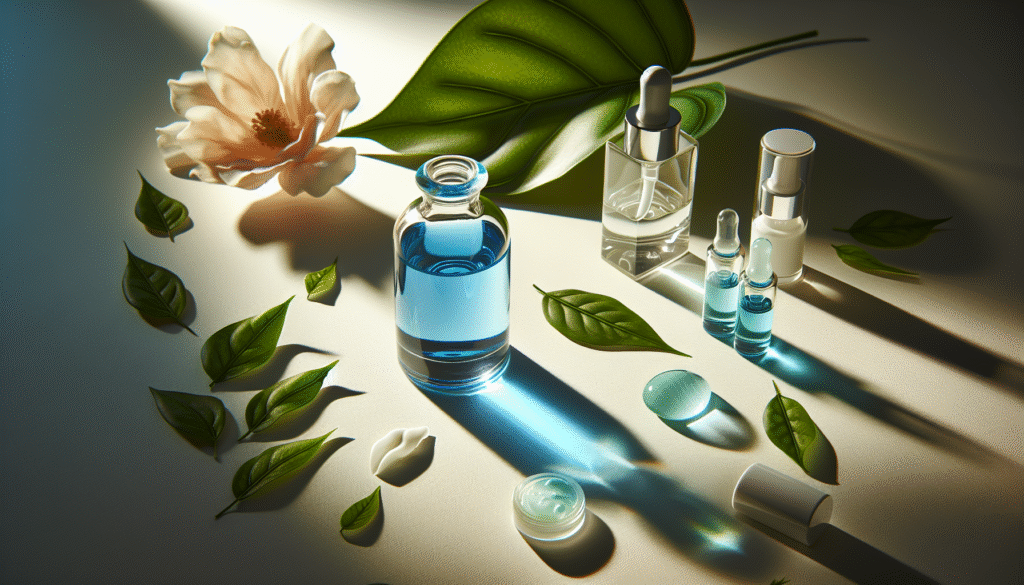
Is Methylene Blue Effective for All Skin Types?
Have you ever considered how a single compound could impact your skin’s health? Methylene blue, primarily known for its use in medicine and as a dye, is gaining attention in the skincare realm. But before you add it to your regimen, you might wonder: Is it effective for all skin types?
Understanding Methylene Blue
The story of methylene blue is both fascinating and multifaceted. Originally synthesized in the 19th century, it was utilized as a dye and later found applications in various medical treatments. Today, its properties are being investigated in the skincare industry for potential benefits ranging from its antioxidant capabilities to its use as a potential treatment for various skin conditions.
What Is Methylene Blue?
Methylene blue is a synthetic dye with a rich history in medicine. In dermatology, it is recognized for helping to manage specific skin conditions and malevolent agents caused by oxidative stress.
Mechanism of Action
Methylene blue works at the cellular level by promoting cellular metabolism and enhancing mitochondrial function. This means it helps your cells produce energy more efficiently, potentially leading to healthier, more resilient skin. The compound has also demonstrated potent antioxidant properties, which can combat the damaging effects of free radicals.
Benefits of Methylene Blue for Skin
You may be curious about the specific benefits of incorporating methylene blue into your skincare routine. Below are several key advantages that have been highlighted in recent studies and anecdotal evidence.
Antioxidant Properties
The ability of methylene blue to act as an antioxidant makes it suitable for all skin types, particularly if you are looking to combat visible signs of aging and environmental stressors. Antioxidants neutralize free radicals, minimizing cellular damage and promoting overall skin health.
Anti-Inflammatory Effects
For individuals with sensitive or inflammatory conditions such as rosacea or acne, methylene blue may provide therapeutic benefits. Its anti-inflammatory properties can help soothe irritated skin, reducing redness and promoting a more uniform skin tone.
Targeting Hyperpigmentation
If you have concerns about dark spots or uneven skin tone, methylene blue may assist in reducing hyperpigmentation. Its ability to influence melanin production can result in a more even complexion, although results can vary based on individual skin characteristics.

Skin Types and Their Unique Needs
Understanding your skin type is crucial when considering new products. Each type—whether oily, dry, combination, or sensitive—has specific needs. Below, you can find a breakdown of how methylene blue may affect various skin types.
| Skin Type | Expected Benefits | Cautions |
|---|---|---|
| Oily | May help reduce excess oil production and improve overall clarity. | Monitor for increased breakouts. |
| Dry | Can provide hydration and improve skin texture. | Ensure it’s paired with a good moisturizer. |
| Combination | Balances oiliness and hydration. | Be cautious with application to prevent overdrying. |
| Sensitive | Helps calm irritation and redness. | Always do a patch test before full application. |
Oily Skin
If your skin tends to be oily, you may benefit from methylene blue’s ability to regulate oil production. This compound can potentially assist in controlling breakouts when incorporated into your skincare routine. However, be careful to monitor your skin’s response, as increased oil regulation can occasionally lead to breakouts for some individuals.
Dry Skin
Individuals with dry skin often seek nourishing ingredients to restore moisture balance. Methylene blue can provide a hydrating effect, improving skin texture and making it more supple. Pairing it with a quality moisturizer can enhance its benefits, allowing your skin to feel both fresher and more revitalized.
Combination Skin
For combination skin types, the balancing act is crucial. Methylene blue could effectively serve both the oily and dry areas by creating an equilibrium. However, it’s important to personalize your regimen and observe how your skin behaves in response to treatment.
Sensitive Skin
Those with sensitive skin can find benefits in methylene blue’s anti-inflammatory properties, which may help diminish redness and irritation. Despite its potential benefits, always conduct a patch test before fully integrating it into your routine to ensure it doesn’t provoke any adverse reactions.
Application of Methylene Blue
Understanding how to apply methylene blue properly is essential for achieving desired results. The method of application can vary based on the product formulation, so here are some recommended approaches.
Concentration and Formulation
Methylene blue is available in various concentrations. For skincare, it’s commonly found in serums or creams. Always opt for formulations specifically designed for topical use. Typically, a lower concentration (around 0.1% to 1%) is advisable for topical application to minimize potential irritation.
How to Apply
- Patch Test: This is crucial for any topical treatment. Apply a small amount to a discreet skin area to check for any adverse reaction.
- Cleanse: Before applying methylene blue, ensure your skin is clean and free from any makeup or dirt.
- Application: Use your clean hands or a cotton pad to apply a thin layer of methylene blue to affected areas or the entire face, depending on the product instructions.
- Follow-Up: Allow it to dry completely before applying any additional products. You may want to follow with a hydrating serum or moisturizer based on your skin type.

Potential Side Effects
While methylene blue holds promise for various skin types, it’s essential to be aware of potential side effects. Not everyone may have the same experience, and individual reactions can vary.
Common Side Effects
- Staining: Methylene blue can temporarily stain the skin, so it’s best to use it at night.
- Irritation: Some might experience irritation or an allergic reaction, especially those with sensitive skin.
- Dryness: Overuse can lead to excessively dry skin, so moderation is key.
When to Seek Help
Should you experience severe reactions such as extensive redness, swelling, or rash, discontinue use immediately and consult a dermatologist. Professional guidance can help you navigate skincare options tailored to your specific needs.
Conclusions and Recommendations
In summary, methylene blue exhibits a range of benefits that can be advantageous across various skin types. Its antioxidant and anti-inflammatory properties make it a compelling candidate for skincare formulations, potentially offering solutions for issues like oily skin, dryness, and sensitivity.
However, it is imperative to approach its use wisely. Personal skin reactions can vary significantly. To determine if it is right for you, consider conducting thorough research, patch testing, and consulting a dermatologist before adding it to your regimen.
As you contemplate incorporating new ingredients, remember that healthy skin is not merely about what you apply, but also involves lifestyle factors such as nutrition, hydration, and sun protection. Adopting a comprehensive approach that combines these elements will enhance your journey toward achieving the skin you desire.